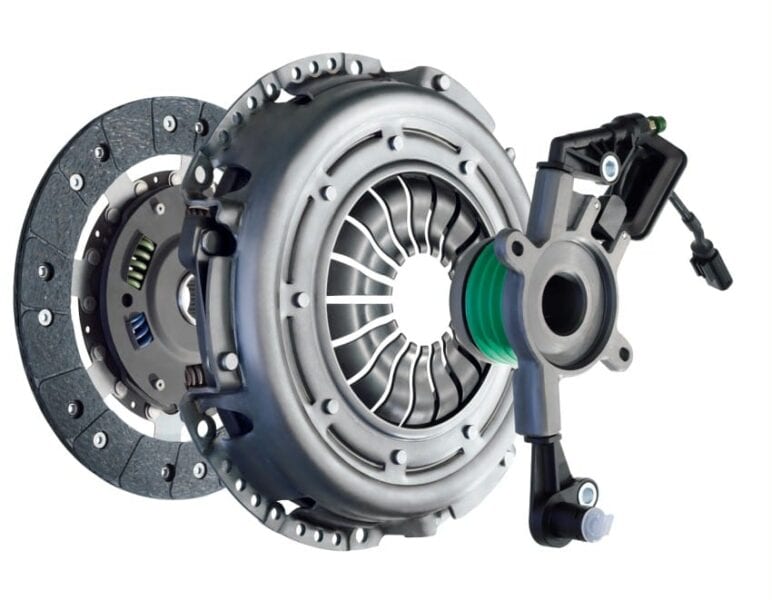
How does a car clutch work?
Content
Have you ever wondered what happens in the car when you press the clutch pedal? Drivers with great experience are familiar with the structure of this mechanism, so our review will be useful for beginners.
Let's look at a little more information about the role that clutch plays for the efficient operation of the car, as well as the principle of the mechanism.
What is grip and what is its role?
Clutch is an important component of a car device, the function of which is to connect (disconnect) the engine to the gearbox. In other words, this is a type of mechanical device designed to provide short-term disconnection of the engine from the gearbox during gear changes.
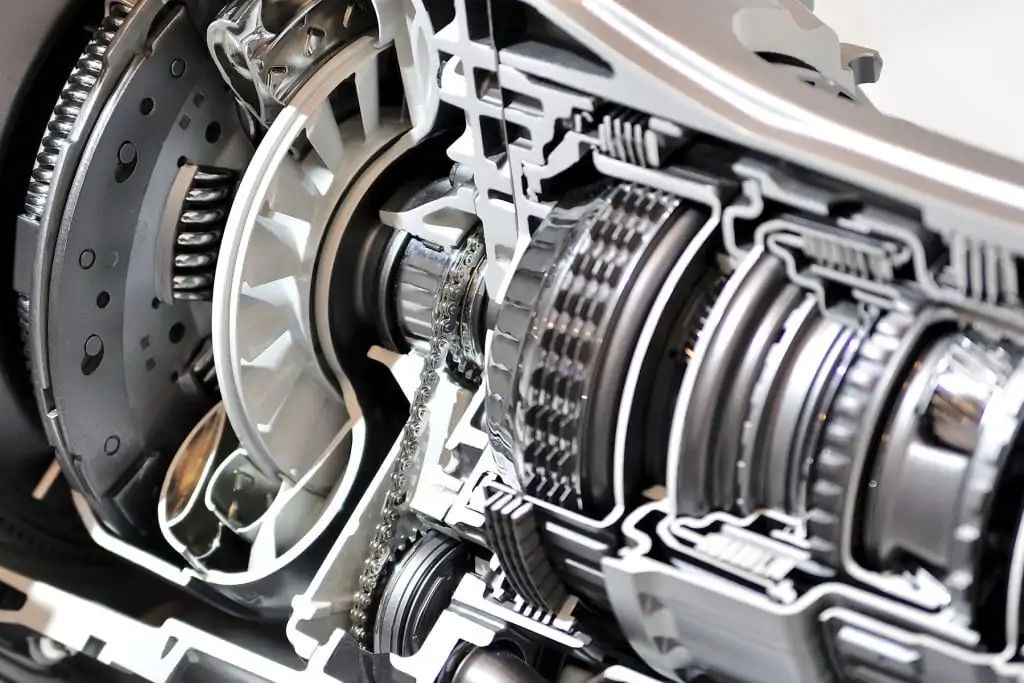
In addition, it provides torque transmission and protects the gearbox from damage caused by overload, vibration, etc.
Why is a mechanism needed?
Imagine driving a car with an engine directly connected to the gearbox. It will be impossible to start the engine in this case, since the starter will crank the crankshaft, but also the wheels. When the driver decides to stop the car while driving, he will have to completely turn off the engine. If you drive without a clutch, the engine of your car will be subjected to a huge load, and its service life will be no more than a few days.
To prevent this from happening, the cars are equipped with a clutch, thanks to which the engine flywheel smoothly connects and disconnects from the input shaft of the gearbox while the car is moving. So, the clutch is the main element that makes it possible to shift gears without any problems and sad consequences for the engine.
Key clutch components
To understand how the mechanism works, you need to have an idea of what the clutch kit includes. The main components include:
- slave drive;
- flywheel;
- pressure plates;
- release bearing;
- body.

Slave drive
This disc is located between the flywheel and the pressure plate. On both sides there is friction material (similar to brake pad material).
When the clutch is engaged, it is tightly clamped, and the torque is transmitted due to the friction force. The drive shaft of the box is inserted into it, through which torque is transmitted.
Flywheel
The flywheel is mounted on the crankshaft of the engine and acts as the main disk. It is usually two-mass and consists of two parts interconnected by springs.
Pressure plate
The task of this part is to create pressure on the driven disk. In older vehicles, this pressure is generated by coil springs, while in modern models, pressure is generated by a diaphragm spring.
Release bearing
The function of this bearing is to relieve the load on the spring using a cable or hydraulic control so that the transmission of torque is interrupted.
Chassis
All components of the connector are assembled together in a common housing or the so-called "basket". As standard, the housing is attached to the flywheel.
How does a car clutch work?
When the car is in motion, the clutch is constantly on. This means that the pressure plate exerts constant pressure on the drive disc. Since this disk is attached to the flywheel, which, in turn, is connected to the engine crankshaft, it rotates with it to transmit torque from the car's engine to the gearbox.
As soon as the clutch pedal is pressed, the force is transmitted to the release bearing, which, in turn, leads to the disconnection of the pressure plate from the drive disk. Thus, the torque ceases to enter the transmission, and the transmission can be changed.
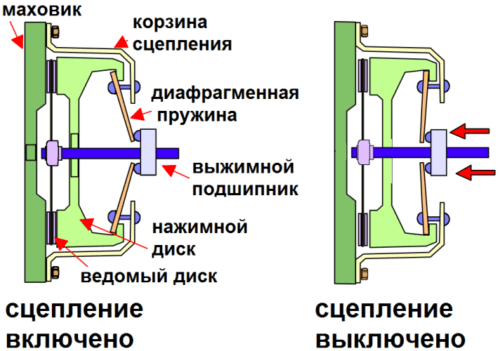
After switching the speed, the clutch pedal is simply released (it rises), the pressure plate returns to its place, and the clutch engages again.
Types of mechanisms
Although all these mechanisms have a similar principle of action, they are divided into several groups:
- depending on the type of drive;
- by type of friction;
- by the number of disks;
- according to the method of engagement.
Depending on drive type
Depending on the type of clutch drive are divided into:
- mechanical;
- hydraulic;
- electric.
Mechanical
Mechanical clutches are currently the most common in automobiles. This type of coupling consists of one, two or more drive discs that are compressed between coil springs or membrane springs. Most mechanical clutches are “dry” and are driven by pressing the clutch pedal.
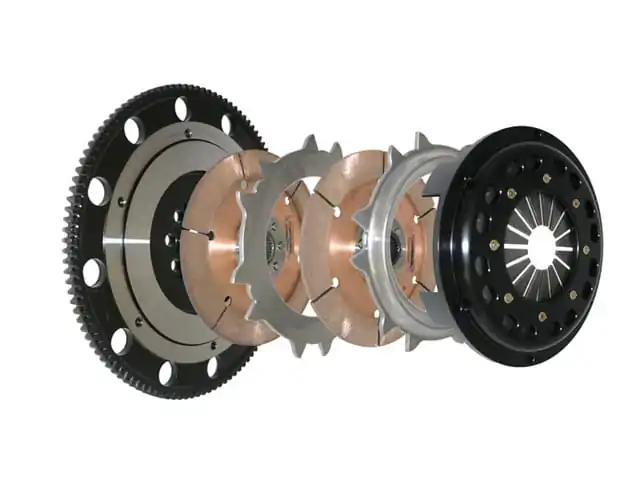
Hydraulic
This type of clutch uses hydraulic fluid to transmit torque. The hydraulic couplings do not have a mechanical connection between the drive and the drive component.
electrical
The difference between electrical and mechanical clutch is the presence of an electric motor on the clutch. This engine is activated when the clutch pedal is depressed. The motor moves the cable, displaces the release bearing and releases the friction disc so that gears can be shifted.
By type of friction
According to this criterion, the connectors are divided into “dry” and “wet”. The work of “dry” clutches is based on the friction force resulting from the interaction of dry surfaces: main, compression, drive disks, etc. “Dry” single-plate clutches are most common in cars with a manual gearbox.
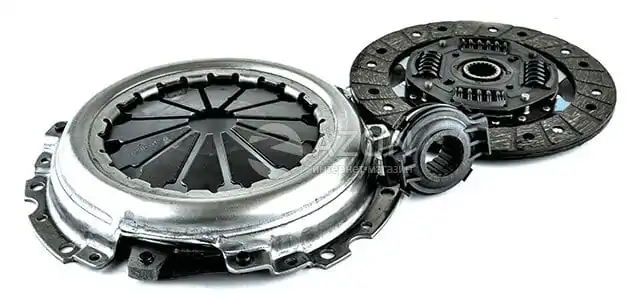
In “wet” couplings, friction surfaces are immersed in oil. Compared to “dry” clutches, this type provides smoother contact between the disks, the unit cools more efficiently due to fluid circulation, and the clutch can transmit more torque to the transmission.
By the number of discs
Based on this criterion, the connectors can be divided into single-disk, double-disk and multi-disk. Single-disk clutches are used mainly in cars, double-disk clutches are mainly intended for installation in trucks and buses of large capacity, and multi-disk clutches are used in motorcycles.
By gearing method
Spring
This type of clutch uses coil or diaphragm springs to apply pressure to the pressure plate to actuate the clutch.
Centrifugal
As their name implies, centrifugal force is used in this type of mechanism to actuate the clutch. They do not have a pedal, and the clutch is activated automatically depending on the engine speed.

Centrifugal types of connectors use a load that is directed to the fastener. When the engine speed increases, centrifugal force activates the crankshaft lever, which presses the pressure plate, causing clutch. This type of clutch is not used in cars.
Semi-centrifugal
Since centrifuges operate efficiently only when the engine is operating at higher speeds and ineffective at low speeds, there is a need for semi-centrifugal couplings that use both centrifugal and spring forces.
Thus, when the speed is normal, the torque is transmitted by the force of the spring, and when it is higher, it is transmitted by centrifugal force. This type of clutch is also not used in cars.
Electromagnetic
With this type of connector, the drive disc is attached to an electromagnetic coil. When electricity is supplied to this coil, it begins to act like a magnet and attracts the release plate.
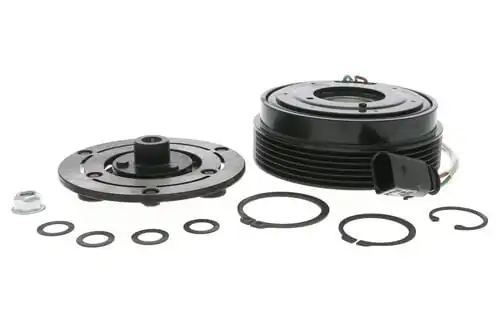
When is it time to pay attention to grip?
Couplings, like all other mechanisms, are subjected to heavy loads and have a certain service life, which varies from 30 to 000 kilometers, depending on the make and model of the car and driving style.
Given this, once they reach their mileage limit, problems arise that indicate that it is time to replace the clutch.
A feature of the mechanism is that before it ceases to perform its functions effectively, the clutch “warns” that it does not work properly. If you know the main symptoms to avoid more serious problems, you can respond in a timely manner.
Symptoms indicating that the clutch needs to be replaced
Soft pedal
If the clutch works fine, you should feel a little resistance when you press the pedal. If you stop feeling such resistance and when you press the pedal, it “drowns”, as in a bowl with oil, this is an early sign that the clutch is nearing the end of its life.
Slippage effect

You will notice this symptom most clearly if you try to change gears while climbing uphill or overtaking. “Slipping” itself occurs because the clutch cannot engage or completely disengage the friction disc when you press or release the clutch pedal. This symptom indicates that the mechanism requires attention, and the replacement should be done as quickly as possible.
Makes uncharacteristic sounds or smells
When you press the clutch pedal and hear the sound of rubbing metal parts, in 99,9% of cases this means that some of the clutch components are worn out. Along with the sounds of scratching metal on metal, you can also feel a rather unpleasant odor, which is another indication that the clutch's life is coming to an end.
Strong vibrations are felt
If you feel unusual vibrations when trying to shift gears and squeezing the pedal, this is another sign of a worn clutch. Vibration can be caused by the clutch disc, which periodically loses coupling with the flywheel.
To extend the life of the clutch, you must minimize its overload, take care of its maintenance (details on how to extend the life of the clutch here) Be sure to also replace it if you notice any of the symptoms mentioned above.
Questions and answers:
What happens when the clutch is pressed? When the clutch pedal is pressed, the discs in the basket are spread through the drive (a cable or in some auto hydraulics), and the torque from the flywheel is not transmitted to the gearbox.
How does clutch work in simple terms? The pedal is pressed - the discs in the basket are unclenched - the desired gear is turned on - the pedal is released - the driven disc is firmly pressed against the flywheel - the thrust goes to the gearbox.
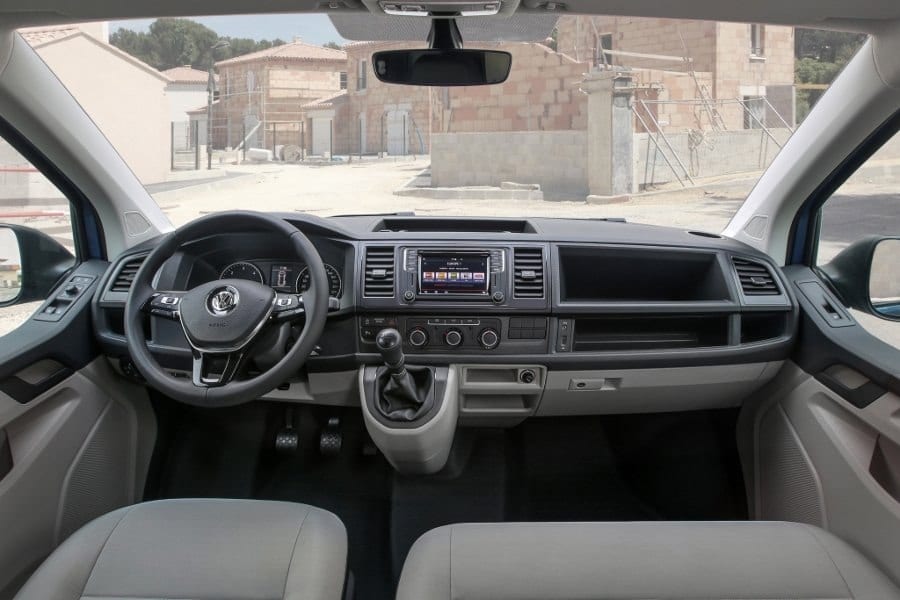
One comment
ally
get in